Written in a house in Church Street, Stoke Newington, London, 'Robinson Crusoe' was Defoe's debut work of fiction. And it came late in his life - he was almost sixty when he penned it. Defoe was born 'Daniel Foe' in London circa 1660. Son of James Foe, a butcher and tallow chandler, Daniel's early life coincided with the Great Plague and the Great Fire of London, as well as the raid on the Medway by the Dutch Navy. By the time he was ten, his mother Annie had died.
His adult life was equally event filled. As a risk-taking merchant he found himself bankrupt and as a political writer he was imprisoned. A prolific writer on topics as diverse as crime, politics, religion, marriage, psychology and the supernatural, he was also a pioneering journalist. After travelling around Europe, he adding the 'De' to his surname (perhaps to sound more exotic or aristocratic). He witnessed the Great Storm of 1703 and wrote a book about it the following year. After the success of his first work of fiction with 'Robinson Crusoe' in 1719, he followed up with others such as 'Moll Flanders' and 'Roxana'. His marriage to Mary Tuffley produced eight children. Defoe (pictured below) died on 24 April 1731.
While it's possible that Selkirk and Defoe actually met one another, what seems probable is that Defoe would have been familiar with the 1712 publication of 'A Cruising Voyage Around the World' by Captain Woodes Rogers, who had rescued Selkirk in February 1709 from his four years and four months of solitude on the island of Mas A Tierra in the Juan Fernandez archipelago off the coast of Chile. His publication relayed Selkirk's experiences in some detail as it was his crew who discovered Selkirk “clothed in goat-skins” gesticulating wildly to them from the shore. Selkirk’s survival story spread widely due to Woodes Rogers’s work. A likely scenario is that Selkirk's adventures - interwoven with creations of Defoe's own imagination plus perhaps elements from other retold survival stories - formed the basis of Robinson Crusoe, which was completed seven years later.
There were of course several notable differences between Alexander and Robinson. For example, the former left his ship by choice while the latter was shipwrecked. Selkirk spent four years and four months on an uninhabited island, while Crusoe found himself stranded for 28 years. Selkirk had only goats and cats for company while Crusoe had 'Man Friday'. Crusoe's island was in the Atlantic while Selkirk's was a Pacific island.
Back in the Parish of Largo, as elsewhere, the connection between the fictional Crusoe and the famous local Alexander Selkirk became strong. Both men (the real and the fictitious) were celebrated. In 1792, the Reverend Mr Spence Oliphant wrote the Statistical Account for the Parish of Largo. The words recorded within this (recorded under the 'Eminent and Notable Men' section) cemented the connection. Oliphant's words, shown below, bear a strong resemblance to the account published by Woodes Rogers and following the publication of the 1792 Statistical Account his words were reprinted in many newspapers and journals. Selkirk family members continued to live in Largo and were able to share recollections of their famous relative. Some Selkirk artefacts remained in circulation. The statue of Crusoe was erected on the site of Selkirk's former home in 1885. Part of the main street in Lower Largo was named 'Defoe Place' for a time. A Selkirk museum was a feature in Largo in the late 1980s.
Three centuries after its origin, 'Robinson Crusoe' is still read and enjoyed in numerous formats and languages. The tale and its main character continue to be discussed and studied. The genre is still imitated and re-invented - a recent example being the novel (and movie) 'The Martian'. But the classic image of the wild man dressed in goat skins is the one that remains most recognisable and most authentic. The true story of Alexander Selkirk and the image of him described by Woodes Rogers has influenced many an artistic book cover, as well as Largo's own statue.
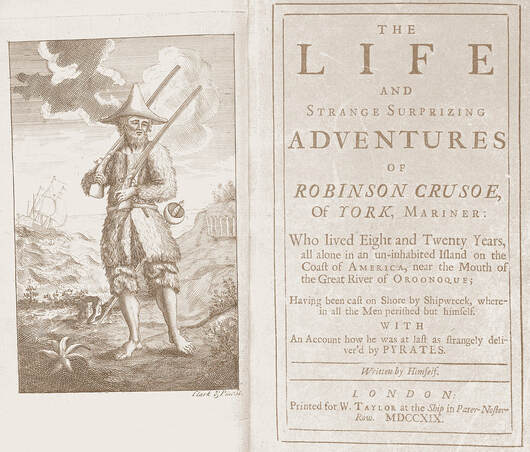
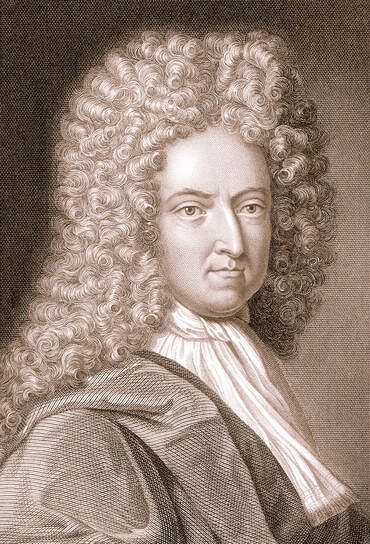
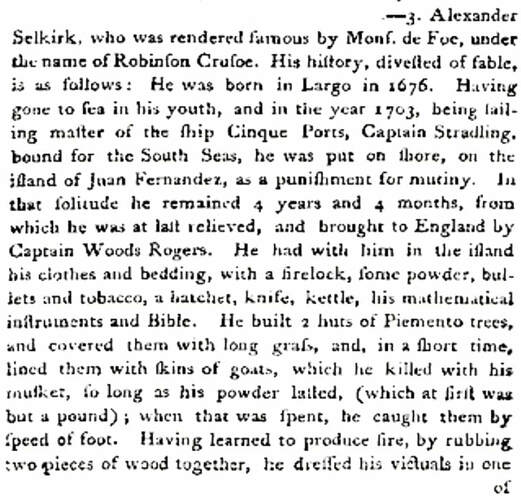
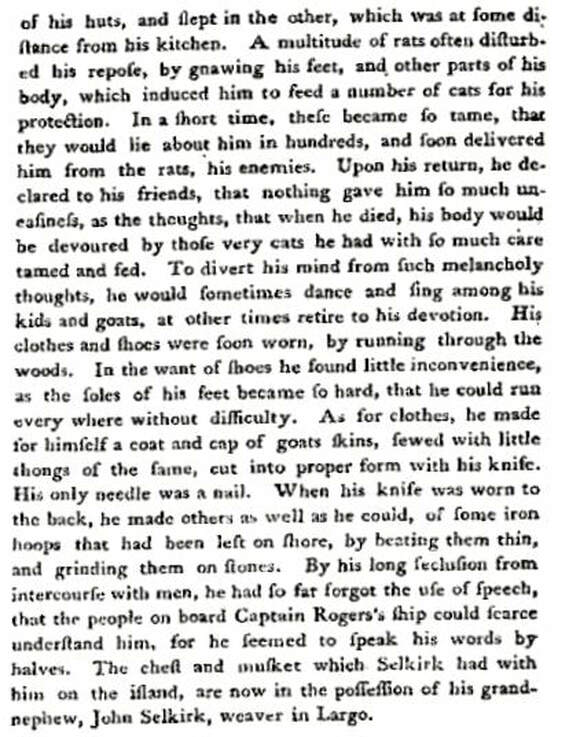
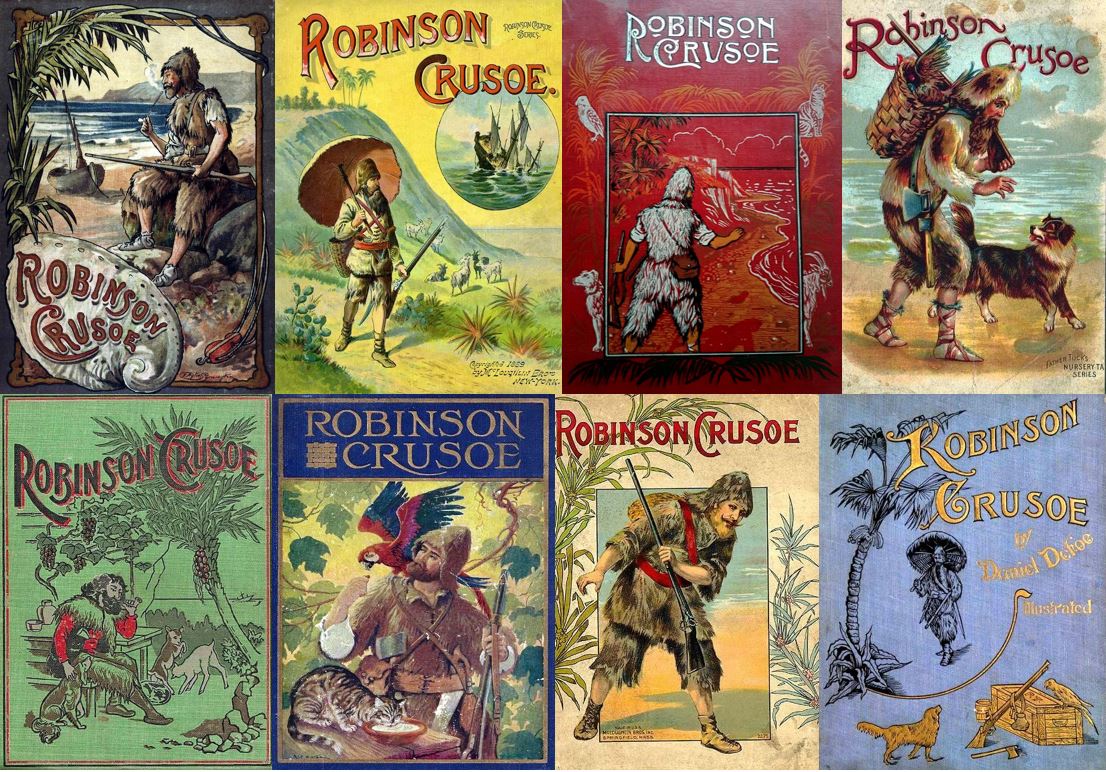
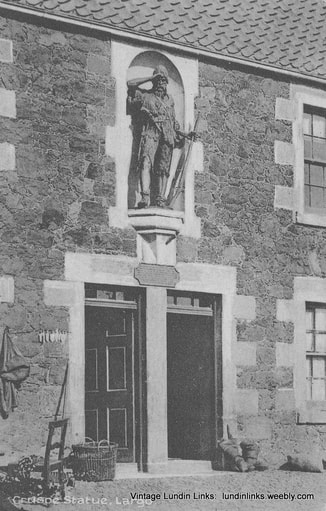
 RSS Feed
RSS Feed
